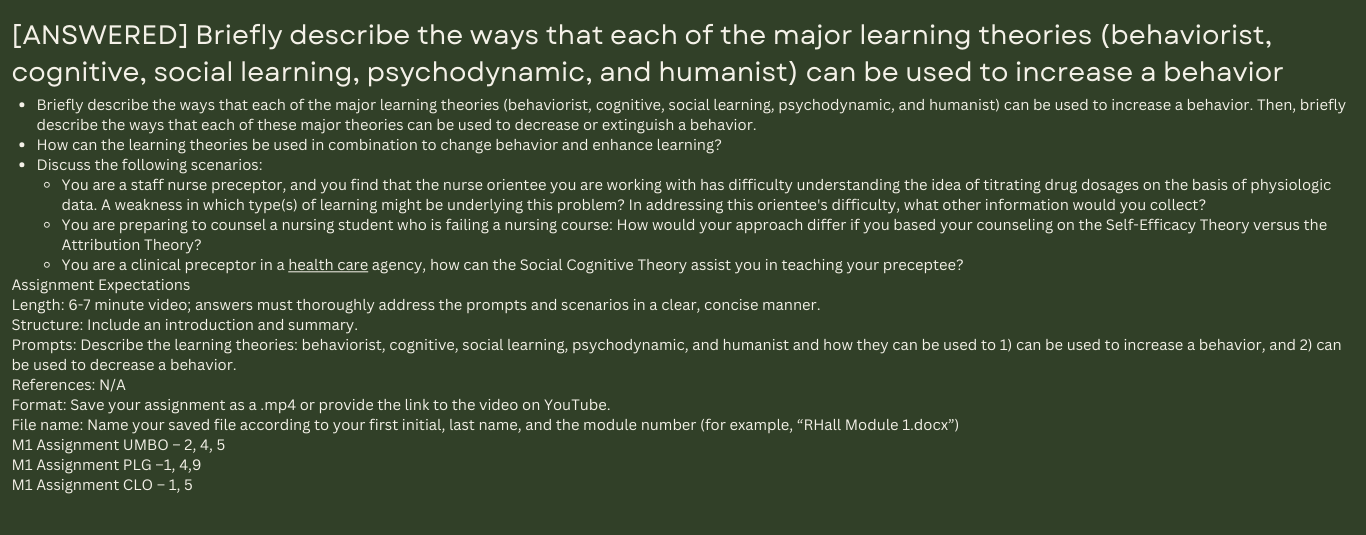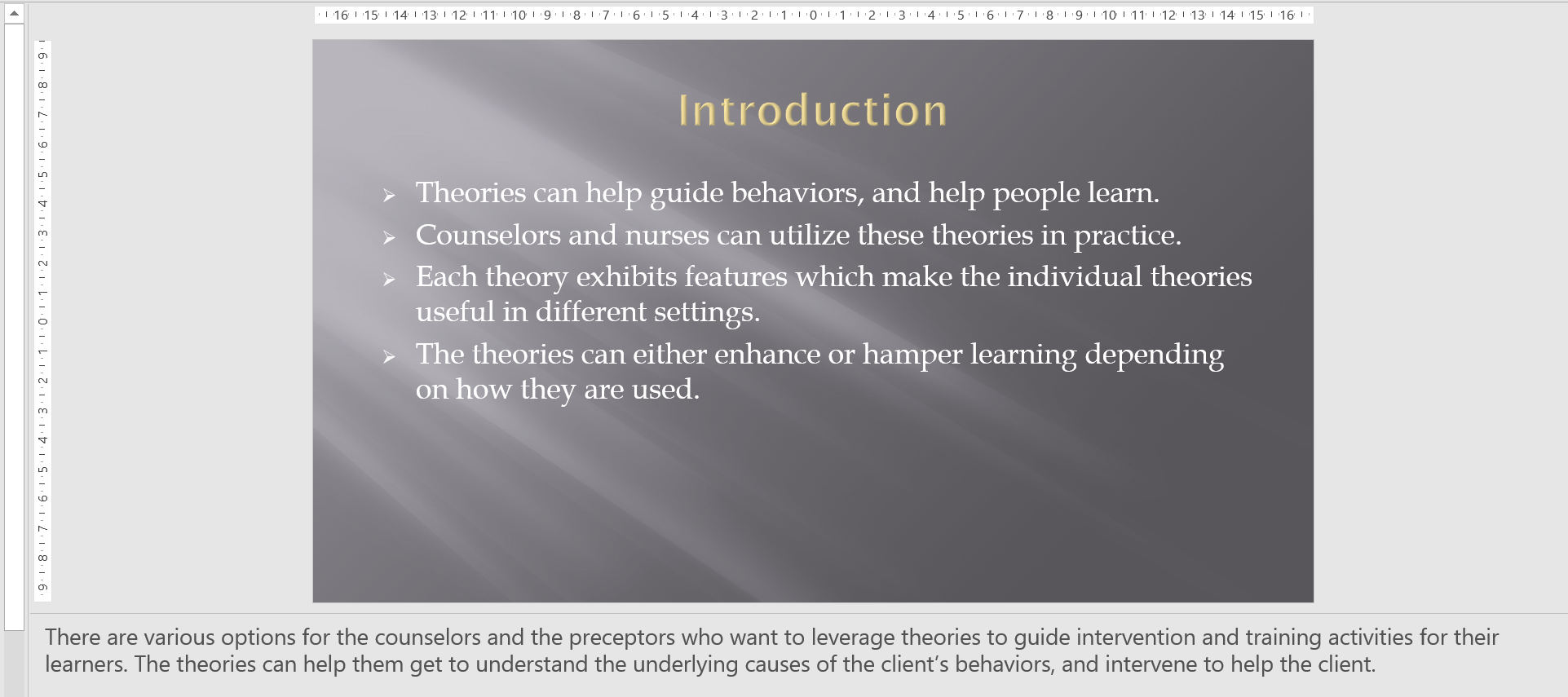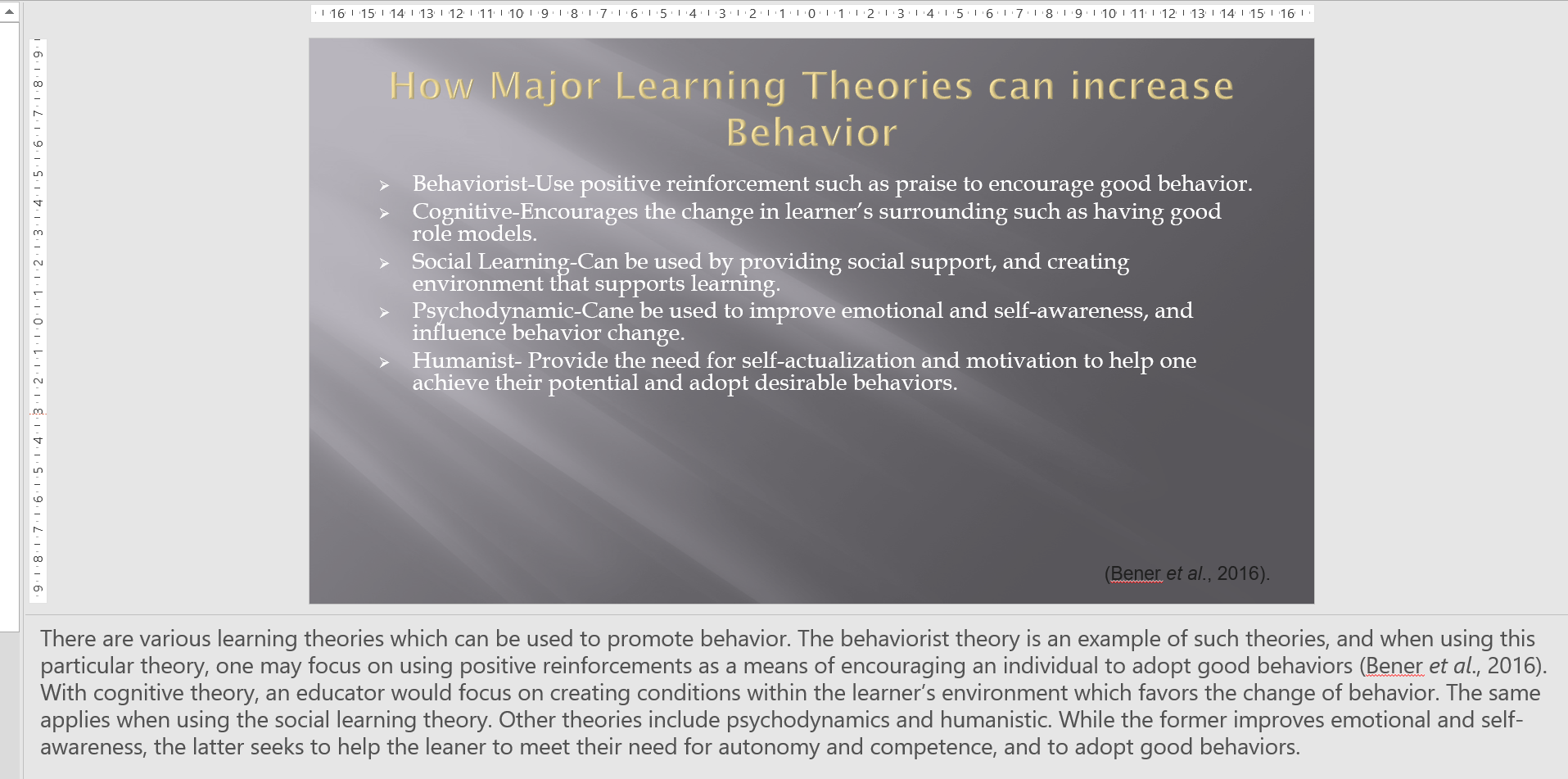Create a 6-7 minute video addressing the following questions/prompts: Briefly describe the ways that each of the major learning theories (behaviorist, cognitive, social learning, psychodynamic, and humanist) can be used to increase a behavior. Then, briefly describe the ways that each of these major theories can be used to decrease or extinguish a behavior.
-

Create a 6-7 minute video addressing the following questions/prompts:
- Briefly describe the ways that each of the major learning theories (behaviorist, cognitive, social learning, psychodynamic, and humanist) can be used to increase a behavior. Then, briefly describe the ways that each of these major theories can be used to decrease or extinguish a behavior.
Assignment Expectations
Length: 6-7 minute video; answers must thoroughly address the prompts and scenarios in a clear, concise manner.
Structure: Include an introduction and summary.
Prompts: Describe the learning theories: behaviorist, cognitive, social learning, psychodynamic, and humanist and how they can be used to 1) can be used to increase a behavior, and 2) can be used to decrease a behavior.
References: N/A
Format: Save your assignment as a .mp4 or provide the link to the video on YouTube.
File name: Name your saved file according to your first initial, last name, and the module number (for example, “RHall Module 1.docx”)
M1 Assignment UMBO – 2, 4, 5
M1 Assignment PLG –1, 4,9
M1 Assignment CLO – 1, 5
Expert Answer and Explanation

There are various options for the counselors and the preceptors who want to leverage theories to guide intervention and training activities for their learners. The theories can help them get to understand the underlying causes of the client’s behaviors, and intervene to help the client.

There are various learning theories which can be used to promote behavior. The behaviorist theory is an example of such theories, and when using this particular theory, one may focus on using positive reinforcements as a means of encouraging an individual to adopt good behaviors (Bener et al., 2016). With cognitive theory, an educator would focus on creating conditions within the learner’s environment which favors the change of behavior.
The same applies when using the social learning theory. Other theories include psychodynamics and humanistic. While the former improves emotional and self-awareness, the latter seeks to help the leaner to meet their need for autonomy and competence, and to adopt good behaviors.

Although the theories can be useful in learning, they can hamper learning to a certain degree. For example, applying the behaviorism by banning students from attending classes on the ground that they failed to follow class rules, can worsen their performance by missing out on coursework. Similarly, removing the role models from a learner’s life, can put them at risk of developing undesirable behaviors (Gershman et al., 2016).
Using the social learning theory, a psychologist may expose